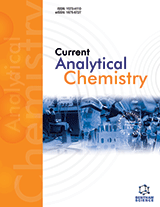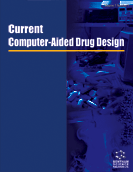摘要
背景:与HCV有关的疾病代表了世界范围内的健康威胁。多年来,大量的独立研究致力于了解HCV感染的分子基础。这些研究中的大量研究集中在病毒蛋白质的结构表征上,目的是开发基于结构的创新性治疗方法。对目前蛋白质数据库内容的分析揭示了病毒的结构生物学迄今涵盖了大部分HCV蛋白质(75%)。 目的:本综述重述了丙型肝炎病毒个体蛋白质结构特征的现状,特别关注其结构多样性/灵活性。 结果:这项调查表明,越来越多的证据表明,结构灵活性是HCV蛋白质中的一个共同特征。这种多功能性可以在不同的结构水平上检测到,即可替代的低聚状态的出现和/或局部和全局的灵活性。令人惊讶的是,HCV蛋白质的一些无序或高度灵活的区域,如E2的核心和抗原片段412-423,在病毒基因型中呈现高度保守的序列。 HCV蛋白质的总体多功能性在宿主蛋白质识别,药物抗性机制和来自宿主免疫原性系统的病毒逸出中起重要作用。特别相关的是新兴的想法,即HCV使用局部结构灵活性作为序列变异的替代工具以逃避宿主生物体的免疫应答。 结论:我们认为,本次调查中出现的概念对于开发急需的抗-HCV疫苗是非常重要的。
关键词: 结构多样性,病毒蛋白质,内在无序区域,疫苗开发,结构生物学。
Current Medicinal Chemistry
Title:Structural Versatility of Hepatitis C Virus Proteins: Implications for the Design of Novel Anti-HCV Intervention Strategies
Volume: 24 Issue: 36
关键词: 结构多样性,病毒蛋白质,内在无序区域,疫苗开发,结构生物学。
摘要: Background: HCV-linked pathologies represent worldwide health threats. Over the years, an enormous number of independent studies have been devoted to the understanding of the molecular bases of HCV infection. A significant amount of these investigations has been focused on the structural characterization of the virus proteins with the aim of developing structure-based innovative therapeutic approaches. An analysis of the current Protein Data Bank content unravels that the structural biology of the virus has hitherto covered a large fraction of the HCV proteins (75%).
Objective: The present review recapitulates the state-of-the-art of structural characterizations of HCV individual proteins with a specific focus on their structural versatility/flexibility.
Results: This survey indicates there is accumulating evidence that structural flexibility is a common feature among HCV proteins. This versatility can be detected at different structural level i.e. occurrence of alternative oligomeric states and/or of local and global flexibility. Somewhat surprisingly, some disordered or highly flexible regions of HCV proteins, such as the core and the antigenic fragment 412-423 of E2, present highly conserved sequences among the virus genotypes. The overall versatility of HCV proteins plays an important role in host protein recognition, drug resistance mechanisms, and virus escape from the host immunogenic system. Of particular relevance is the emerging idea that HCV uses local structural flexibility as an alternative tool to sequence variability to evade the immune response of the host organism.
Conclusion: We believe that concepts emerged from this survey will be important for the development of anti-HCV vaccines that are eagerly needed.
Export Options
About this article
Cite this article as:
Structural Versatility of Hepatitis C Virus Proteins: Implications for the Design of Novel Anti-HCV Intervention Strategies, Current Medicinal Chemistry 2017; 24 (36) . https://dx.doi.org/10.2174/0929867324666170508105544
| DOI https://dx.doi.org/10.2174/0929867324666170508105544 |
Print ISSN 0929-8673 |
| Publisher Name Bentham Science Publisher |
Online ISSN 1875-533X |
 21
21 5
5 1
1 1
1
- Author Guidelines
- Graphical Abstracts
- Fabricating and Stating False Information
- Research Misconduct
- Post Publication Discussions and Corrections
- Publishing Ethics and Rectitude
- Increase Visibility of Your Article
- Archiving Policies
- Peer Review Workflow
- Order Your Article Before Print
- Promote Your Article
- Manuscript Transfer Facility
- Editorial Policies
- Allegations from Whistleblowers
- Announcements
Related Articles
-
Stimulation of Tumor-Specific Immunity by p5 HER-2/neu Generated Peptide Encapsulated in Nano-liposomes with High Phase Transition Temperature Phospholipids
Current Drug Delivery Repositioning of Drugs in Cardiometabolic Disorders: Importance and Current Scenario
Current Topics in Medicinal Chemistry Clinical Trials of Novel Targeted Therapies in Ovarian Cancer: Moving Beyond Poly ADP Ribose Polymerase (PARP) Inhibitors
Current Pharmaceutical Biotechnology Frequency of Interleukins IL1ß/IL18 and Inflammasome NLRP1/NLRP3 Polymorphisms in Sickle Cell Anemia Patients and their Association with Severity Score
Current Molecular Medicine The Role of ROS and RNS in Regulating Life and Death of Blood Monocytes
Current Pharmaceutical Design From Nucleic Acids to Drug Discovery: Nucleobases as Emerging Templates for Drug Candidates
Current Medicinal Chemistry Determination of Mutation Pattern in Human Androgen Receptor by Means of Amino-Acid Pair Predictability
Protein & Peptide Letters Complementary, Alternative and Integrative Medicine for Childhood Atopic Dermatitis
Recent Patents on Inflammation & Allergy Drug Discovery The Therapeutic Potential of RNA Interference: Novel Approaches for Cancer Treatment
Current Pharmaceutical Biotechnology Nociceptive Pathway and Pathology of Low Back Pain
Current Rheumatology Reviews Proteomics and Protein Analyses of Ovine and Caprine Body Fluids: Current Studies and Future Promises
Current Protein & Peptide Science Pharmacogenetic Determinants of Immediate and Delayed Reactions of Drug Hypersensitivity
Current Pharmaceutical Design Muscarinic Acetylcholine Receptor-Interacting Proteins (mAChRIPs): Targeting the Receptorsome
Current Drug Targets The Growth Hormone Secretagogue Receptor (Ghs-R)
Current Pharmaceutical Design The Role of Dietary Compounds in the Therapy of Nicotine-Induced Osteoporosis
Current Drug Targets Information Management for the Study of Allergies
Inflammation & Allergy - Drug Targets (Discontinued) Targeting Negative Regulators of TRIF-dependent TLR Signaling Pathway as a Novel Therapeutic Strategy
Current Signal Transduction Therapy Adipose Tissue and Bone Marrow as Sources for Cell-based Therapeutic Angiogenesis in Ischemic Tissues: Biological Foundation and Clinical Prospects for Age-related Vascular Disease
Immunology, Endocrine & Metabolic Agents in Medicinal Chemistry (Discontinued) Anti-Inflammatory Agents in Parkinsons Disease
Anti-Inflammatory & Anti-Allergy Agents in Medicinal Chemistry Multi-walled Carbon Nanotubes Reinforced into Hollow Fiber by Chitosan Sol-gel for Solid/Liquid Phase Microextraction of NSAIDs from Urine Prior to HPLC-DAD Analysis
Current Pharmaceutical Biotechnology


























